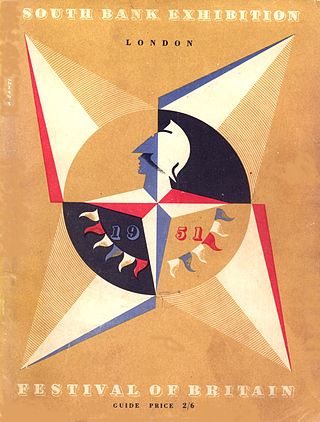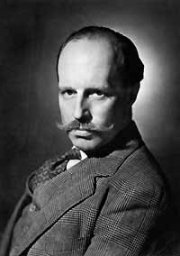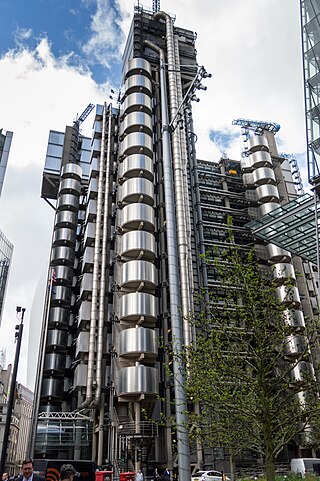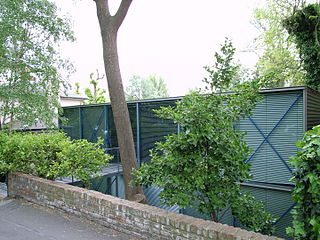Related Research Articles

Walter Adolph Georg Gropius was a German-born American architect and founder of the Bauhaus School, who is widely regarded as one of the pioneering masters of modernist architecture. He was a founder of Bauhaus in Weimar and taught there for several years, becoming known as a leading proponent of the International Style. Gropius emigrated from Germany to England in 1934 and from England to the United States in 1937, where he spent much of the rest of his life teaching at the Harvard Graduate School of Design. In the United States he worked on several projects with Marcel Breuer and with the firm The Architects Collaborative, of which he was a founding partner. In 1959, he won the AIA Gold Medal, one of the most prestigious awards in architecture.

Richard Meier is an American abstract artist and architect, whose geometric designs make prominent use of the color white. A winner of the Pritzker Architecture Prize in 1984, Meier has designed several iconic buildings including the Barcelona Museum of Contemporary Art, the Getty Center in Los Angeles, the High Museum of Art in Atlanta, and San Jose City Hall. In 2018, some of Meier's employees accused him of sexual assault, which led to him resigning from his firm in 2021.

The Festival of Britain was a national exhibition and fair that reached millions of visitors throughout the United Kingdom in the summer of 1951.

The San Francisco Museum of Modern Art (SFMOMA) is a modern and contemporary art museum and nonprofit organization located in San Francisco, California. SFMOMA was the first museum on the West Coast devoted solely to 20th-century art, and has built an internationally recognized collection with over 33,000 works of painting, sculpture, photography, architecture, design, and media arts. The collection is displayed in 170,000 square feet (16,000 m2) of exhibition space, making the museum one of the largest in the United States overall, and one of the largest in the world for modern and contemporary art. In 2024, SFMOMA was ranked 14th in the Washington Post's list of the best art museums in the U.S.

Sir Basil Urwin Spence, was a Scottish architect, most notably associated with Coventry Cathedral in England and the Beehive in New Zealand, but also responsible for numerous other buildings in the Modernist/Brutalist style.
Sir Michael John Hopkins was an English architect.

Richard George Rogers, Baron Rogers of Riverside was a British-Italian architect noted for his modernist and constructivist designs in high-tech architecture. He was the founder at Rogers Stirk Harbour + Partners, previously known as the Richard Rogers Partnership, until June 2020. After Rogers' retirement and death, the firm rebranded to simply RSHP on 30 June 2022.

Dame Zaha Mohammad Hadid was an Iraqi-British architect, artist and designer, recognised as a key figure in architecture of the late-20th and early-21st centuries. Born in Baghdad, Iraq, Hadid studied mathematics as an undergraduate and then enrolled at the Architectural Association School of Architecture in 1972. In search of an alternative system to traditional architectural drawing, and influenced by Suprematism and the Russian avant-garde, Hadid adopted painting as a design tool and abstraction as an investigative principle to "reinvestigate the aborted and untested experiments of Modernism [...] to unveil new fields of building".

Charles Mark Correa was an Indian architect and urban planner. Credited with the creation of modern architecture in post-Independent India, he was celebrated for his sensitivity to the needs of the urban poor and for his use of traditional methods and materials.
The year 1976 in architecture involved some significant architectural events and new buildings.
Arup is a British multinational professional services firm headquartered in London that provides design, engineering, architecture, planning, and advisory services across every aspect of the built environment. It employs about 17,000 people in over 90 offices across 35 countries, and has participated in projects in over 160 countries.

High-tech architecture, also known as structural expressionism, is a type of late modernist architecture that emerged in the 1970s, incorporating elements of high tech industry and technology into building design. High-tech architecture grew from the modernist style, utilizing new advances in technology and building materials. It emphasizes transparency in design and construction, seeking to communicate the underlying structure and function of a building throughout its interior and exterior. High-tech architecture makes extensive use of aluminium, steel, glass, and to a lesser extent concrete, as these materials were becoming more advanced and available in a wider variety of forms at the time the style was developing – generally, advancements in a trend towards lightness of weight.
Hopkins Architects is a prominent British architectural firm established by architects Sir Michael and Patricia, Lady Hopkins.

The Forum is a public building in Norwich, Norfolk, England. The building opened in 2001 and was designed by the British architectural firm Sir Michael Hopkins and Partners. It was built to serve as a replacement to the Norwich Central Library, which burnt down on the site in 1994. After a proposal for a site named Technopolis was rejected, a second version, which was named New Technopolis before changing to the Forum, was constructed. The Norfolk and Norwich Millennium Library sits to the west end of the building, with office and commercial spaces and studios for the BBC around a main atrium. The building is fronted by a glass façade with a surrounding brick wall and inner steel frame supporting a glass and zinc panel roof. The project cost £66 million, of which £31 million was from the Millennium Commission. The library has been named one of the most popular in the country, while The Forum is a venue for public events and festivals and the outside plain hosts live performances. Despite winning several awards, the building has been criticised for its use of materials and has been likened to a shopping mall and airport terminal.
The year 2012 in architecture involved some significant architectural events and new buildings.

Iain Mackintosh is a British practitioner of theatre combining four interwoven careers as theatre producer, theatre space designer, curator of theatre painting and architecture exhibitions, and author and lecturer on both modern and eighteenth century theatre. He has campaigned for the retention and restoration of historic theatres as working homes for live performance. From 1975 he curated or contributed to several exhibitions of theatre paintings and architecture.
Patricia Ann Hopkins, Lady Hopkins, is an English architect and joint winner, along with her husband Sir Michael Hopkins, of the 1994 Royal Gold Medal for Architecture.

The Hopkins House at 49a Downshire Hill is the common name given to the high-tech home and workspace in Hampstead, London (1976), designed by architects Michael and Patty Hopkins. It has been described as a "genuine icon of the High Tech movement". The house won a RIBA Award for Architecture in 1977 and a Civic Trust Award in 1979.
British high-tech architecture is a form of high-tech architecture, also known as structural expressionism, a type of late modern architectural style that emerged in the 1970s, incorporating elements of high tech industry and technology into building design. High-tech architecture grew from the modernist style, using new advances in technology and building materials.

The year 2023 in architecture involved some significant architectural events and new buildings.
References
- 1 2 Merrick, Jay (19 November 2013). "The Brits Who Built the Modern World and 49b - the house built by High Tech designers Michael and Patty Hopkins". The Independent. Retrieved 8 February 2014.
- ↑ Considine, Pippa (4 February 2014). "BBC Four to run season on architecture". Televisual. Retrieved 8 February 2014.
- ↑ "BBC Four celebrates architecture with Nation Builders season". BBC. 3 February 2014. Retrieved 8 February 2014.
- ↑ "BBC highlights the Brits who Build the Modern World". Construction Manager. 6 February 2014. Retrieved 8 February 2014.
- ↑ "OU on the BBC: The Brits Who Built The Modern World". Open University. 3 February 2014. Retrieved 8 February 2014.
- ↑ "The Brits Who Built The Modern World". RIBA. Retrieved 8 February 2014.
- ↑ Richard Waite, Laura Mark (5 March 2014). "BBC slammed for 'bias' after Patty Hopkins is sidelined in TV show". Architects' Journal . Retrieved 23 October 2015.
Deborah Saunt co-founder of DSDHA, said: 'The point is that the BBC are publicising the work of these great British architects without including a very important sixth member (being a full partner in Hopkins Architects from the beginning) - a member who was present at the time when the group photo was taken! To knowingly choose to use a metaphorically or literally edited photo without Patty in it, is an outrage.'